Filter by
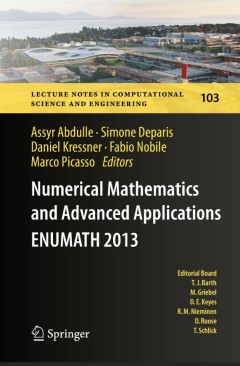
Numerical Mathematics and Advanced Applications - ENUMATH 2013:Proceedings of…
This book gathers a selection of invited and contributed lectures from the European Conference on Numerical Mathematics and Advanced Applications (ENUMATH) held in Lausanne, Switzerland, August 26-30, 2013. It provides an overview of recent developments in numerical analysis, computational mathematics and applications from leading experts in the field. New results on finite element methods, mul…
- Edition
- 1
- ISBN/ISSN
- 978-3-319-10704-2
- Collation
- XVI, 810
- Series Title
- Lecture Notes in Computational Science and Engineering
- Call Number
- -
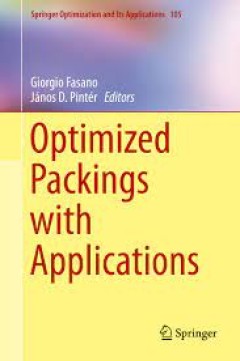
Optimized Packings with Applications
This volume presents a selection of case studies that address a substantial range of optimized object packings (OOP) and their applications. The contributing authors are well-recognized researchers and practitioners. The mathematical modelling and numerical solution aspects of each application case study are presented in sufficient detail. A broad range of OOP problems are discussed: these incl…
- Edition
- -
- ISBN/ISSN
- 978-3-319-18899-7
- Collation
- -
- Series Title
- -
- Call Number
- -

Optimization, Control, and Applications in the Information Age In Honor of P…
Recent developments in theory, algorithms, and applications in optimization and control are discussed in this proceedings, based on selected talks from the ‘Optimization Control and Applications in the Information Age’ conference, organized in honor of Panos Pardalos’s 60th birthday. This volume contains numerous applications to optimal decision making in energy production and fuel manage…
- Edition
- -
- ISBN/ISSN
- 978-3-319-18567-5
- Collation
- -
- Series Title
- -
- Call Number
- -
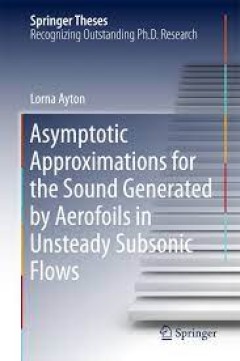
Asymptotic Approximations for the Sound Generated by Aerofoils in Unsteady Su…
This thesis investigates the sound generated by solid bodies in steady subsonic flows with unsteady perturbations, as is typically used when determining the noise generated by turbulent interactions. The focus is predominantly on modelling the sound generated by blades within an aircraft engine, and the solutions are presented as asymptotic approximations. Key analytical techniques, such as the…
- Edition
- -
- ISBN/ISSN
- 978-3-319-19959-7
- Collation
- -
- Series Title
- -
- Call Number
- -

An Introduction to Continuous-Time Stochastic Processes: Theory, Models, and …
This textbook, now in its third edition, offers a rigorous and self-contained introduction to the theory of continuous-time stochastic processes, stochastic integrals, and stochastic differential equations. Expertly balancing theory and applications, the work features concrete examples of modeling real-world problems from biology, medicine, industrial applications, finance, and insurance using …
- Edition
- Ed. 1
- ISBN/ISSN
- 978-1-4939-2757-9
- Collation
- XVI, 482
- Series Title
- Modeling and Simulation in Science, Engineering and Technology
- Call Number
- 519 CAP i

Reduced Basis Methods for Partial Differential Equations: An Introduction
This book provides a basic introduction to reduced basis (RB) methods for problems involving the repeated solution of partial differential equations (PDEs) arising from engineering and applied sciences, such as PDEs depending on several parameters and PDE-constrained optimization. The book presents a general mathematical formulation of RB methods, analyzes their fundamental theoretical prop…
- Edition
- -
- ISBN/ISSN
- 978-3-319-15431-2
- Collation
- -
- Series Title
- -
- Call Number
- 515.35
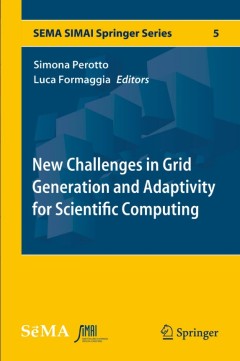
New Challenges in Grid Generation and Adaptivity for Scientific Computing
This volume collects selected contributions from the “Fourth Tetrahedron Workshop on Grid Generation for Numerical Computations”, which was held in Verbania, Italy in July 2013. The previous editions of this Workshop were hosted by the Weierstrass Institute in Berlin (2005), by INRIA Rocquencourt in Paris (2007), and by Swansea University (2010). This book covers different, though related,…
- Edition
- 1
- ISBN/ISSN
- 978-3-319-06052-1
- Collation
- VIII, 325
- Series Title
- VIII, 325
- Call Number
- -

Linear Regression Using R : An Introduction to Data Modeling
Linear Regression Using R: An Introduction to Data Modeling presents one of the fundamental data modeling techniques in an informal tutorial style. Learn how to predict system outputs from measured data using a detailed step-by-step process to develop, train, and test reliable regression models. Key modeling and programming concepts are intuitively described using the R programming language. Al…
- Edition
- -
- ISBN/ISSN
- 9781946135001
- Collation
- -
- Series Title
- -
- Call Number
- 515 LIL l
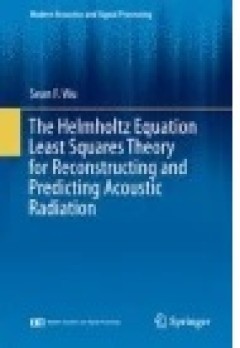
The Helmholtz Equation Least Squares Method
This book represents the HELS (Helmholtz equation least squares) theory and its applications for visualizing acoustic radiation from an arbitrarily shaped vibrating structure in free or confined space. It culminates the most updated research work of the author and his graduate students since 1997. The book contains six chapters. The first serves as a review of the fundamentals in acoustics and …
- Edition
- -
- ISBN/ISSN
- 978-1-4939-1640-5
- Collation
- XIII, 233
- Series Title
- Modern Acoustics and Signal Processing
- Call Number
- -
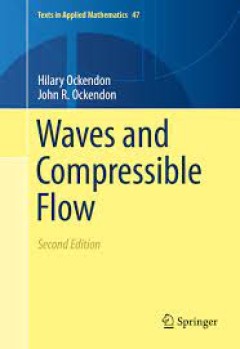
Waves and Compressible Flow
Now in its second edition, this book continues to give readers a broad mathematical basis for modelling and understanding the wide range of wave phenomena encountered in modern applications. New and expanded material includes topics such as elastoplastic waves and waves in plasmas, as well as new exercises. Comprehensive collections of models are used to illustrate the underpinning mathematic…
- Edition
- -
- ISBN/ISSN
- 978-1-4939-3381-5
- Collation
- VII, 243
- Series Title
- -
- Call Number
- -
 Computer Science, Information & General Works
Computer Science, Information & General Works  Philosophy & Psychology
Philosophy & Psychology  Religion
Religion  Social Sciences
Social Sciences  Language
Language  Pure Science
Pure Science  Applied Sciences
Applied Sciences  Art & Recreation
Art & Recreation  Literature
Literature  History & Geography
History & Geography